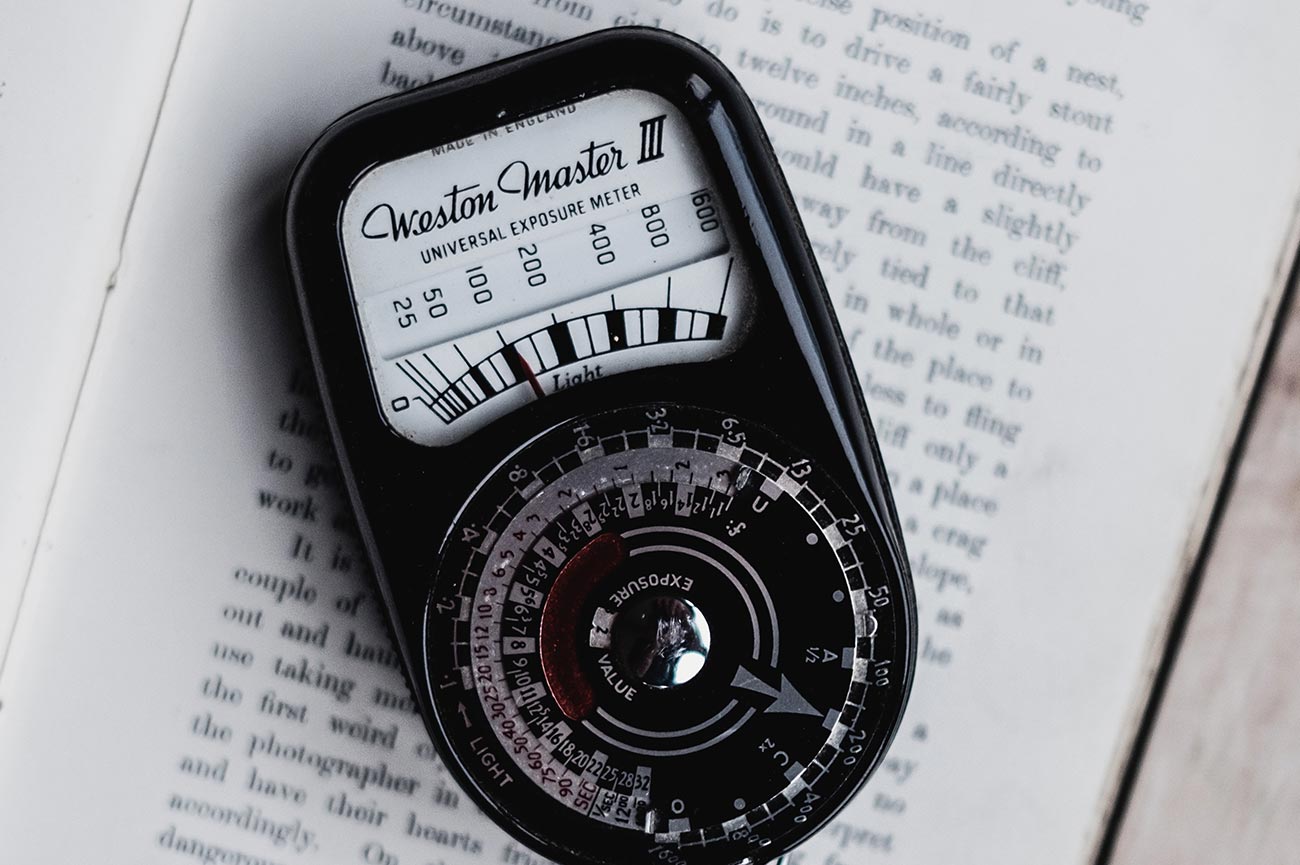Light Meter for Film Photography

Photo by Annie Spratt
Handheld Light Meters for Film Photography
Handheld light meters are designed to give a larger range of exposure, aperture, and shutter speed settings for film photography. This is particularly helpful for photography tips and techniques like winter photography and night photography as the handheld meter will help determine the proper length of exposure time. There are two general types of light meters – reflected-light meter and incident-light meter.
Reflected-light meters are similar to the through-the-lens (TTL) light meters found in most modern 35mm SLR film cameras. These meters are calibrated to gather all light from the scene and average it out into one, mid-gray exposure. This particularly becomes a problem when the scene is very bright, like beach or winter photography, because the bright colors are underexposed as middle gray colors. The photographer must compensate for this by over-exposing the film. Incident-light meters are used to measure one particular light source falling on the subject matter. Because it measures a single source, there is less of a chance of incorrect exposure readings.
Spot light meters, a reflected-light meter, may also be used to measure various light sources in one composition. By taking multiple readings over the shadows and highlights you can determine the optimal exposure using the zone system. The zone system, in short, says to expose film for shadows and print for highlights. A spot meter will allow you to measure the shadow areas and create a proper exposure to follow the zone system.
How to Use a Handheld Light Meter
Reflected- and incident-light meters require the user to first select the appropriate ISO film speed on the meter. With a reflected-light meter, you measure light by point the light meter at the subject and with incident-light meters, you stand where the subject is and measure the light pointed back at the camera. Pushing the meter button will give you a number to which you set the exposure dial. Once properly set, you will be able to read the shutter speed and aperture settings that you can use for the exposure. Which settings you use will depend on how much depth of field you wish to obtain and if motion photography is desired. If you have an electronic light meter, chances are, you will just have to push a button and it will automatically give you the optimal settings to use.

















